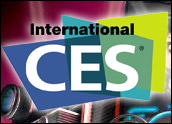
Fuel cell technology is often associated with cars, specifically the next generation of automobiles that won’t run on gasoline, juice from a wall socket or any combination of the two. Instead, fuel cell cars will run on highly efficient hydrogen and put out next to nothing in the way of emissions.
Making that a reality won’t be easy, though. Getting the whole world to switch to an entirely new fuel system for transportation is an enormous undertaking. Getting people to consider new ways to power something smaller and a little more disposable than a car — a laptop for instance — may be a more realistic goal, at least for now.
That’s exactly what PolyFuel aims to do. The company engineers membranes that act as key components in fuel cells, and it’s making progress in its goal of creating a practical laptop fuel cell prototype. Such a power source would never need to plug in for a recharge. Instead, the user would gas it up with another methanol cartridge — and it could run for as long as more cartridges were on-hand.
Jim Balcom, CEO of PolyFuel, talked about the progress and politics of the fuel cell industry at March’s Tech Policy Summit. TechNewsWorld caught up with Balcom to find out more.
TechNewsWorld: Could you give a broad-strokes explanation of what fuel cell technology is and what it does?
Jim Balcom:
Fuel cells kind of combine the best combination of a battery and the best combination of an engine in the way that batteries convert chemical energy directly, cleanly and efficiently into electrical energy. Fuel cells do that like batteries do. Like an engine, a fuel cell will continue to generate electricity as long as you supply a fuel to it. So you can think of a fuel cell as kind of like a refillable battery. It will continue to generate electricity as long as you continue to supply fuel to it.
It’s quite helpful in an application where you want extended run time. Today, if you’re happy with a two- to four-hour run time in your laptop, no problem, you don’t need a fuel cell. But if you really want to enjoy all of the wireless connectivity that’s coming down our way … you really need something that’s an improvement on today’s power supply, and that’s the way fuel cells can really come on.
TNW: What sort of fuels do fuel cells typically run on at this stage?
Balcom:
There are different types of fuels that fuel cells can work with. The most common ones would be hydrogen, and those are more typically used for automotive applications, or natural gas, which is more typically used for a home application, or methanol, which is more typically used or typically considered for a consumer electronics application.
TNW: What kind of emissions are present in a fuel cell?
Balcom:
From any fuel cell, the emissions are water vapor and a small amount of heat. If you’re using natural gas or methanol as a fuel, there’s also a small amount of CO2 that’s emitted from the fuel cell.
TNW: One of the benefits you describe fuel cell technology as having is allowing consumers and users of portable electronics to keep their devices running as long as they have more fuel cells on-hand. From a user perspective, how is that different than simply having more conventional batteries on-hand?
Balcom:
One of the advantages of the fuel cell is that the fuel cartridge in the consumer electronics application where methanol is the fuel, the methanol has seven to 10 times more energy for any given amount of weight than a battery does. So if you wanted an extra 10 hours of run time, to do that with a battery you’d be carrying around a couple pounds worth of extra batteries. To do that with a fuel cartridge and a fuel cell, you’re carrying around a few ounces worth of extra fuel to give yourself those extra 10 hours or run time.
TNW: How long do you see it taking before fuel cells become somewhat common in smaller objects like portable computers?
Balcom:
It really is a challenging technology to bring to market. If it were easy, it would have been done already because in fact people have been working on this and most of the major consumer electronics companies have fuel cell development on the way and have had for the last five or 10 years.
People are working really hard on this, and some of the team sizes are quite big — several tens of people, tens of engineers and scientists working on it. So it’s not for lack of effort, but it really is quite difficult science to shrink the size of the fuel cell small enough to actually be integrated with the device. That’s the biggest challenge.
Back to your question as to when will it happen — different manufacturers have been predicting when they will introduce products, and you’ve heard the adage — “Fuel cells have been five years away for the last 15 years” — and that definitely is an unfortunate aspect of the industry. … Manufacturers have been wanting to get the technology to the market but they’ve really been struggling to get this system small enough to be consumer acceptable.
TNW: Do you see it common in portable computers before it’s very common in larger objects like cars?
Balcom:
We think so, and one of the reasons is that the application in portable electronics has a bunch of aspects that are much more favorable for introduction than in the automotive application. For example, the cost barriers and the lifetime barriers are much easier to hit in consumer electronics. In consumer electronics, you’re not talking about a lot of power that’s required, so fuel cells are typically costed out in a dollar-per-kilowatt range, and you’re only talking about a few watts in electronics. So the cost isn’t as hard to hit.
And the lifetimes in a consumer electronic device are on the order of 2,000 to 3,000 hours of run time. People change out their laptops and mobile phones every six to 24 months, whereas people want their cars to last for 10 years or so.
So the lifetime requirements are a lot easier to hit, the regulatory environment is already making really good progress with portable fuel cells. The fuel infrastructure is a lot easier to put in place — these fuel cartridges can be put on retail shelves very simply, whereas putting a network of hydrogen filling stations in enough geographic distribution within a state, say, is a pretty sizable undertaking. And then the technology turnover, as you know, is very quick, very rapid, so it allows the introduction of new technology.
And finally, it’s being pulled forward by a real desire on behalf of consumers for extended run time, and it actually delivers a benefit to the consumer, whereas a fuel cell powered car doesn’t actually get you to work any quicker or cheaper or safer. It’s better for the environment, which is great, but it doesn’t have sort of a direct, personal impact on your commute time. …
One of the things I spoke about in the talk at the Tech Policy Summit was that we’ve set up this program to try and help the manufacturers with the engineering challenge of getting the systems small enough, and that’s one of the things that we’ve been working on ourselves. We bring kind of a unique perspective to this because we can engineer not only the system level, which many of the CE companies can do, but we can also engineer the components as well, including this sort of base, core, heart of the fuel cell, which is the fuel cell membrane. That’s the primary business that PolyFuel has. We can engineer that component all the way up to and through the system component.
TNW: Do you see any environment benefit coming from the widespread use of fuel cells in portable electronics, or does that mostly come into play when cars and homes begin using the technology?
Balcom:
The widespread benefit is primarily going to be seen in automotive and home applications, where the conversion to fuel cell technology from internal combustion engines or internal combustion generation of heat and power for you home, hot water — that has a very substantial efficiency advantage when a fuel cell is used to do that. That’s where we think the primary environment benefits will come. … It is environmentally better to use a fuel cell to generate that power in a portable device, but the actual amount of power that’s being generated isn’t really that big, so it’s not likely to have a big environmental impact at the portable level.
But one of the interesting things that the fuel cell community feels is that the introduction of fuel cell technology in portable electronics can really help catalyze the introduction of fuel cell technology into the home and automotive applications, because as soon as you turn something into a mass product and you’re starting to produce hundreds of thousands and millions of something, you really have the benefit of coming down the learning curve in terms of new materials, new designs and new processes that have to be developed and used to reach those high-volume commercial introductions. And the spin-off benefits from that can be quite significant in automotive and stationary, helping to pull those forward.
TNW: You also mentioned that you had some trouble getting the attention of California’s federal representatives when trying to get funding under various govt programs. California is typically thought of as a pretty tech-friendly state. Why do you think you had trouble?
Balcom:
We thought being at the leading edge … in fuel cell technology, and with the aspect of fuel cell technology having such a strong contribution to make from an environmental perspective, and California having a very environmental outlook, we thought it would be a shoe-in. But I think what I’ve come to realize is, in actual fact, it’s size that matters, and California is a really substantial state when it comes to tech jobs, and we just don’t have enough of a political footprint here to get the attention of the federal representatives to carry forward the support in congress that’s needed to appropriate additional funding.
We have secured funding from the U.S. federal government, and we’re really pleased with that. And it’s made a huge contribution to the advances we disclosed at the conference. But there could always be more, and that was where we were having some difficulty getting California delegates’ attention.
TNW: But you did find some success in Florida, correct?
Balcom:
We did. We partnered up with the University of North Florida there, and we’re sharing an award that has gone through Congress.





















































